What coating options are available for my aluminum casting?
When selecting a finish for your aluminum casting, knowing what your application requires and what coating options are available is a great place to start.

As-Cast
The term “As-Cast” refers to the surface smoothness and texture of a casting. As-Cast surfaces are measured using Root Mean Square (RMS), a numeric grading system derived from a mathematical formula. View the Cast Microfinish Comparator
Permanent mold As-Cast finishes typically range between 200-420 RMS. However, with LA Aluminum’s special mold preparation techniques and proprietary processes, we regularly achieve castings in the 150-250 RMS range. Imagine a keyboard surface as 60 RMS and an orange peel being 420 RMS.
As-cast finishes are common in commercial grade applications. Depending on your product requirements, as-cast surface finish may be perfectly suitable without any further machining or coatings.
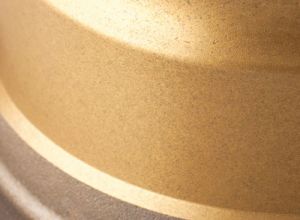
Anodize
Anodizing is an electrolytic passivation process used to increase the thickness of the naturally occurring protective insulating oxide layer in aluminum. Anodizing increases corrosion resistance and wear, provides better adhesion for paint and can be applied in a variety of colors. Anodize does not chip off like some paints.
It should be noted that there will be some anodize color difference between machined surfaces and natural as-cast surfaces. Also, color consistency of anodized castings can vary depending on the amount of silicon content in a given aluminum alloy.
Anodized aluminum castings are commonly found in aerospace, automotive, military, commercial and consumer product applications. Anodizing is also used to prevent galling of threaded components.
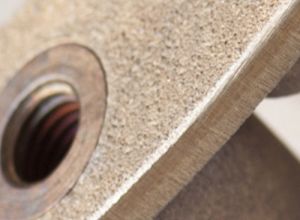
Chromate Conversion
Aluminum Chromate Conversion Coatings per MIL-C-5541 (MIL-DTL-5541) and ASTM B449-93
Chromate conversion, sometimes called chem film or by their trade names Alodine, Irridite, or Bonderite, is a chemical conversion process that provides protection from corrosion. Chromate conversion is primarily used as a corrosion inhibitor, although it is sometimes used as a primer to improve adherence of paints and adhesives, as a decorative finish, or to preserve electrical conductivity. This finish gives the casting a light golden color and results in no measurable buildup on the parts.
Chromate conversion aluminum castings are commonly used in aircraft components, military hardware, automotive, and marine applications.
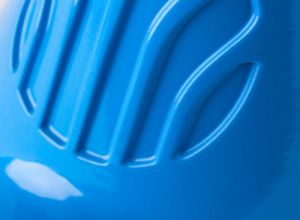
Powder Coat
Powder coating provides a durable cosmetic finish that protects the part from environmental factors. It is applied electrostatically as a free-flowing dry powder and then cured under heat or ultra-violet light. The powder itself may be a thermoplastic or thermoset polymer.
Powder coated products are resistant to diminished coating quality due to impact, moisture, chemicals, and other extreme conditions. In turn, this reduces risk of scratches, chipping, abrasions, corrosion, and other wear issues.
Powder coated aluminum castings come in virtually any color and texture to fit your specifications. Powder coat is suitable for almost any application though commonly found in dental, oil and gas, automotive, marine, alternative energy, instrumentation, safety fall gear, and many other applications.
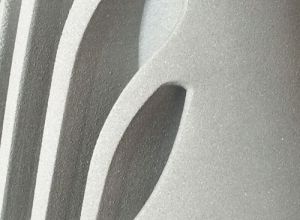
Sand/Bead Blast
Sandblasting, also called abrasive blasting, is the operation of forcibly propelling a stream of abrasive material such as sand, against a surface under high pressure. The result is used to smooth a rough surface, roughen a smooth surface, shape a surface or remove surface contaminants.
Bead blasting is the process of removing surface deposits by applying fine glass beads at a high pressure without damaging the surface. Bead blasting results in a “dull” or “satin” finish.
Sandblasted or bead blasted aluminum castings are used in a wide variety of applications. Parts can be blasted to prepare the cast surface for additional coatings. It can also be specified for cosmetic reasons to blend parting lines or finishing marks. Both blast methods result in a consistent, uniform surface finish.

Bright Dip
Bright Dip is a chemical or electro-brightening treatment which produces an extremely high luster on aluminum. The harder tempered the alloy is, the brighter the end product will be. The bright dipping process smooths the microscopic roughness or “peaks and valleys” on the surface of aluminum. The process does not remove scratches or lines on the alloy.
Bright dip is generally used for cosmetic purposes and can also be applied prior to anodizing to enhance the parts overall brightness. Anodizing after bright dip prevents corrosion, scratching or fading.
Bright dipped aluminum castings are used in any application where the cosmetic appearance of bright, lustrous aluminum castings is important.
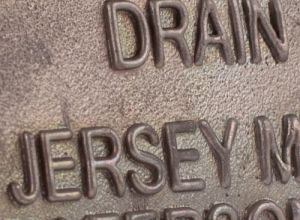
Lettering/Trademark
Cast-in raised lettering, logos, or trademark is a great way to promote marketing and branding your product. Many clients use this as a way for their product to be found on the replacement parts aftermarket. This is also a great way for them to tell their customers who they are and where similar products can be found.
LA Aluminum can cast letters, numbers, logos, trademarks or markings onto products. This is done by cutting the design into the mold itself. Because the mold is permanent, each design will be replicated onto the casting with accuracy.
Your lettering or trademark logo will need to be designed with a little draft to allow the casting to release from the mold with ease. There is no limit to the type of font. However, the designs should be raised whenever possible. The minimum letter size for raised letters is 1/8″ with 1/4″ preferred.
Request Information
Talk with one of our casting specialists for more information.
"*" indicates required fields
